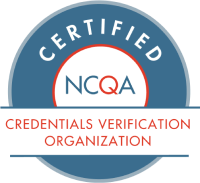We work with a number of health plans and we’ve learned a few tricks that can help reduce provider credentialing turnaround time. Reduced turnaround times increase provider goodwill, help operations improve revenue cycles, and ensure your members have access to the providers they need.
The changes include increasing the efficiency of the approval process for provider onboarding and decreasing redundancy in your primary source verification process. Documentation of these changes is important so be sure to work with the governing bodies in your organization to approve the change in bylaws and procedures. The impact is big. Valuable time will be saved with efficiency gains while maintaining a high-quality credentialing workflow.
Tip 1: Chief Medical Officers Can Approve Clean Files
Write into your health plan bylaws that “clean files” — that is, files with no alerts in any primary source verified data element or verification — can be approved by a Chief Medical Officer (CMO) on behalf of the credentialing committee.
Per NCQA, the CMO can review and approve clean files. Not only does this reduce the credentialing turnaround time, but it also reduces the length of your credentialing committee review meetings. When a credentialing committee comes together, they can focus on what is important and requires their expertise, rather than waste time approving providers that could just as easily be verified by the CMO. Triaging the clean files to the CMO decreases administrative burden, a problem that can cause decreased morale and burnout.
Some clients have decided to categorize providers into thresholds, putting files into 3 or 4 tiers based on the committee’s comfort level. Here’s an example of a 3-tier threshold structure:
- Level 1: Clean. No alerts of any kind. Providers categorized at the first level can be approved by the CMO without going to the credentialing review committee.
- Level 2: Choose a dedicated committee member to look over and approve any files that meet a threshold in which there is only 1 malpractice case below a set dollar value or that is older than a predetermined date.
- Level 3: All other files are reviewed by the credentialing committee.
As with credentialing in general, the point of creating a thresholds system is to safeguard the public and to maintain a high standard when health plans are credentialing healthcare provider. Any issues, including but not limited to any discovered history of malpractice, misconduct, disciplinary action or license revocation, should be escalated to the committee for further discussion.
Tip 2: Accept Implicit Education and Training Verification
We’ve worked with a few of our clients to write an amendment into their bylaws stating that they can accept letters or proof in the form of published statutes/legal regulations from State Licensing Board for education and training verifications.
That’s right, NCQA accepts implicit education and training verification via a letter from a state licensing board. What do we mean by implicit education and training verification as explicit verification? State licensing boards have already reviewed provider education and training credentials so it has the same level of quality as an explicit verification. Essentially, if you primary-source verify a provider’s license, you are also implicitly performing primary source verifications (PSVs) on the provider’s education and highest level of training. Of course, you need to ensure that the state licensing board is actually performing the education/training verifications. Hence, NCQA requires health plans or CVOs to maintain a record that indicates the license board performs these PSVs.
Accepting implicit education and training verifications speeds up the verification process dramatically, by relying on a credible source for information that doesn’t change. And it reduces cost because there’s no need to access an American Medical Association (AMA) profile or national student clearinghouse (NSC) to complete the verification. However, it is acceptable to also obtain an AMA profile or NSC verification — but it is important to be aware that this extra step is redundant, time consuming and costly.
—
These tips are straightforward and could save health plans a ton of work while still maintaining the highest level of compliance.
If you want to learn more about how andros’s expertise and automated credentialing solution can help you further cut costs, reduce turnaround time and improve your provider data management, contact us. We are here to help.



